#American sign language
Text
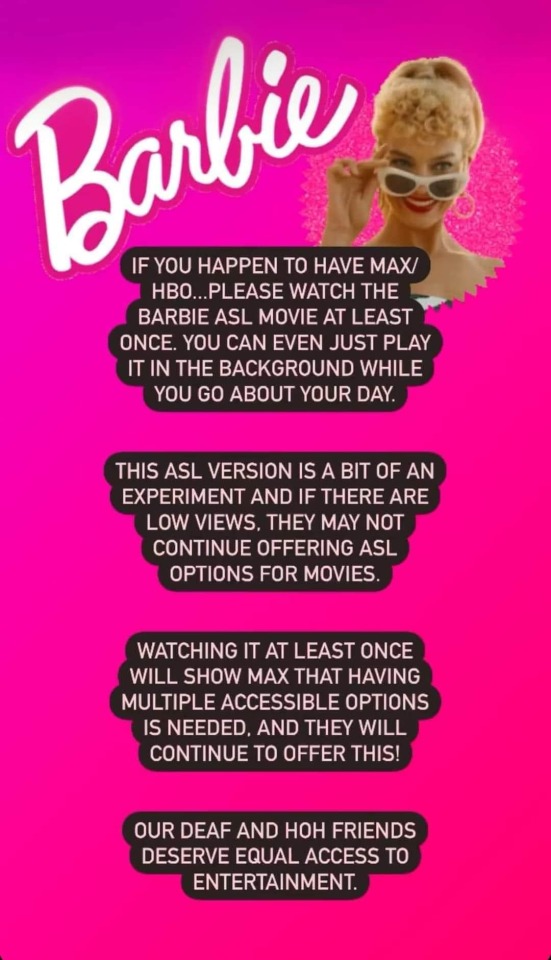
From Misa on Wheels
23K notes
·
View notes
Text
When I’m out with Deaf friends, I put my hearing aid in my purse. It removes any ability to hear, but far more importantly, it removes the ambiguity that often haunts me.
In a restaurant, we point to the menu and gesture with the wait staff. The servers taking the order respond with gestures too. They pantomime “drinks?” and tell us they learned a bit of signs in kindergarten. Looking a little embarrassed, they sign “Rain, rain, go away, come again another day” in the middle of asking our salad dressing choice. We smile and gently redirect them to the menu. My friends are pros at this routine and ordering is easy ― delightful even. The contrast with how it feels to be out with my hearing husband is stunning.
Once my friends and I have ordered, we sign up a storm, talking about everything and shy about nothing. What would be the point? People are staring anyway. Our language is lavish, our faces alive. My friends discuss the food, but for me, the food is unimportant. I’m feasting on the smorgasbord of communication ― the luxury of chatting in a language that I not only understand 100% but that is a pleasure in and of itself. Taking nothing for granted, I bask in it all, and everything goes swimmingly.
Until I accidentally say the word “soup” out loud.
Pointing at the menu, I let the word slip out to the server. And our delightful meal goes straight downhill. Suddenly, the wait staff’s mouths start flapping; the beautiful, reaching, visual parts of their brains go dead, as if switched off.
“Whadda payu dictorom danu?” the server’s mouth seems to say. “Buddica taluca mariney?”
“No, I’m Deaf,” I say. A friend taps the server and, pointing to her coffee, pantomimes milking a cow. But the damage is done. The server has moved to stand next to me and, with laser-focus, looks only at me. Her pen at the ready, her mouth moves like a fish. With stunning speed, the beauty of the previous interactions ― the pantomiming, the pointing, the cooperative taking of our order ― has disappeared. “Duwanaa disser wida coffee anmik? Or widabeeaw fayuh-mow?”
Austin “Awti” Andrews (who’s a child of Deaf adults, often written as CODA) describes a similar situation.
“Everything was going so well,” he says. “The waiter was gesturing, it was terrific. And then I just said one word, and pow!! It’s like a bullet of stupidity shot straight into the waiter’s head,” he explains by signing a bullet in slow motion, zipping through the air and hitting the waiter’s forehead. Powwwww.
Hearing people might be shocked by this, but Deaf people laugh uproariously, cathartically.
“Damn! All I did was say one word!” I say to my friends. “But why do you do that?” they ask, looking at me with consternation and pity. “Why don’t you just turn your voice off, for once and for all?” they say.
Hearing people would probably think I’m the lucky one ― the success story ― because I can talk. But I agree with my friends.
— I'm Deaf And I Have 'Perfect' Speech. Here's Why It's Actually A Nightmare.
#rachel zemach#austin andrews#disability#ableism#deafness#sign language#speech#asl#american sign language
34K notes
·
View notes
Text
-fae
11K notes
·
View notes
Text
from Flyers For Falastin, made by Amal Jamaludin
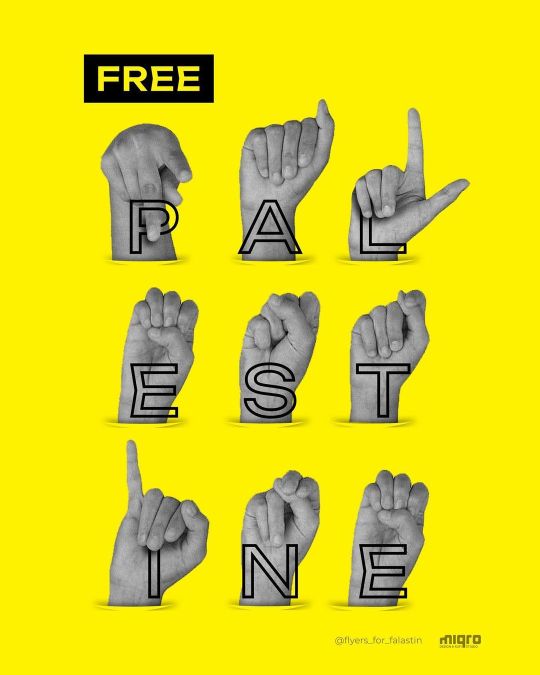
#sign language#asl#american sign language#palestine#free palestine#gaza#free gaza#from the river to the sea palestine will be free#i stand with palestine#rafah#save rafah
3K notes
·
View notes
Text
Today, in “I’ll take any good news I can find”:
A production of Romeo and Juliet with Deaf actors signing their lines has been referred to as bilingual! Not just “accessible” or “diverse” but also BILINGUAL!
This makes me happy because the general idea of ASL (and other signed languages) is that they’re just a manual version of the spoken language. By that logic, Norwegian is just a higher-latitude version of German. Signed languages are languages of their own! With unique vocabulary, grammar, and dialects!
#linguistics#language#language and identity#language and power#language and culture#langblr#asl#american sign language#d/deaf#shakespeare#romeo and juliet#disability#accessibility#wisconsin
3K notes
·
View notes
Text


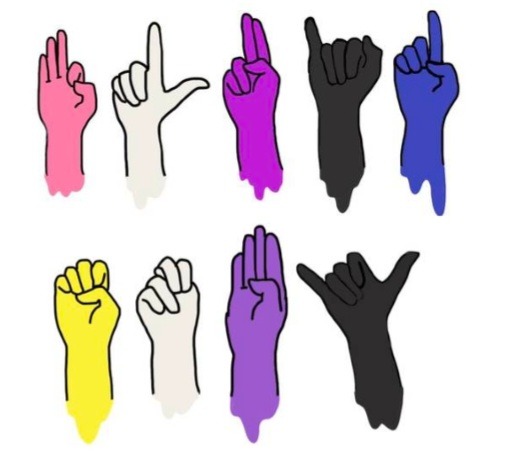

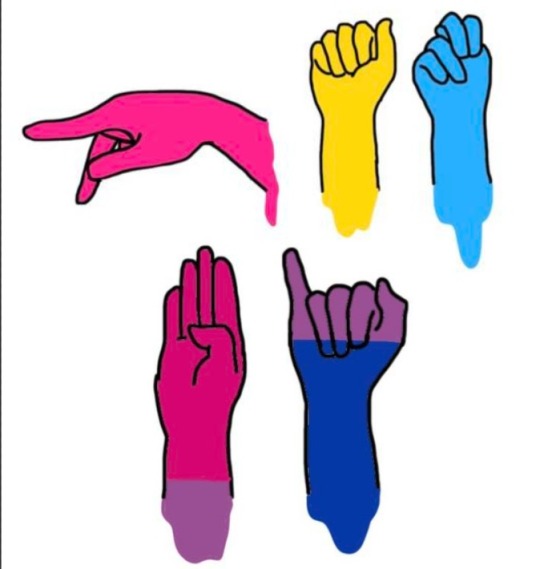

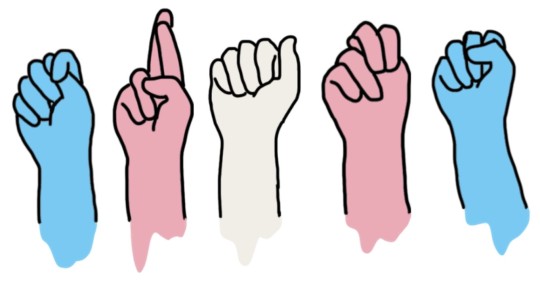
ASL Fingerspelling + Pride Flags; images read as followed: LGBTQIA+ (L is the lesbian flag, G is the gay male flag, B is the bi flag, T is the trans flag, Q is the rainbow flag, I is the intersex flag, A is the acespec & arospec flags back to back, + is the progress flag), Lesbian & Gay, Fluid (Genderfluid flag colors) & Enby (Nonbinary flag colors), Queer (Queer flag) & AroAce, Pan & Bi, Ace & Aro and Trans.
#my art#lgbtq art#asl#american sign language#lgbtqia+#lesbian#gay#bisexual#pansexual#transgender#aromantic#asexual#queer#aroace#genderfluid#nonbinary#5k
7K notes
·
View notes
Text
DSMP asl HCs

AU where Tommy is profoundly deaf and always getting yelled at for being loud, but he claps back with “IM DEAF, SUCK IT UPPP!!!!”
also clarification: Tommy in this au uses ASL but in-universe it’s just generally referred to as ‘sign’ even though I know realistically, it’d probably be BSL. I do not know BSL. 😭 so for my sake he’s using AS
Tubbo learned sign language for him, but isn’t fluent yaya. Techno learned his from a book (for tactical reasons because communicating silently and effectively is really useful) but he gets a lot of it wrong. Phil has the same issue of using signed exact English/incorrect motions for signs, but they’re catching up.
techno is probably a fucking polyglot so it’s not that big of a problem 😭😭 oh and Ranboo goes nonverbal when overstimulated!! And uses rudimentary sign language to communicate.
#i mean what no these are my OCs trust trust#tommyinnit#tommy innit#tom simons#quackity fanart#dsmp au#dsmp art#dsmp fanart#dsmp#tubbo#tubbo fanart#mcyt#mcyt fanart#tommyinnt fanart#american sign language#asl#deaf
1K notes
·
View notes
Text

ASL Christmas~❄️
#asl trio#asl brothers#sabo#monkey d luffy#portgas d. ace#ace sabo and Luffy#one piece#one piece fanart#skialdi art#;; my art#they’re doing A S L in ASL heheh hopefully I drew it right#anyway Merry Christmas 🎄 and happy holidays#digital art#anime art#Christmas art#asl#american sign language
6K notes
·
View notes
Text
if you want to learn sign language of any kind your one and only reason for it should be proper person to person communication. not because it's "so beautiful", not so you can talk shit and nothing else, not so you can say swear words without other people knowing.
if you're learning sign language your one and only reason should be to communicate with people who use sign language. learning sign language means learning about an entire complicated, extremely important culture and the people who are a part of that culture.
you can not learn sign language without learning about d/Deaf culture in depth. it also means learning to stay in your lane on d/Deaf issues. learning sign language and learning about d/Deaf culture does not mean you get to speak on d/Deaf issues, and a lot of hearing people don't realize that.
this has been a notice from a d/Deaf person
#just a few things to keep in mind#♤— ash tries#d/Deaf#deaf#deaf community#deaf culture#hoh#hard of hearing#sign language#american sign language#hearing loss#hearing aids#cochlear implant
747 notes
·
View notes
Text

Elon you’re a dumbass
Misa On Wheels
#Elon#elon musk#elon twitter#american sign language#closed captions#Elon should know better#elon is an idiot#Misa On Wheels (Facebook)
422 notes
·
View notes
Text
ECHO poster in sign language!

#echo#alaqua cox#maya lopez#disney+#mcu#indigenous#native american#american sign language#sign language#deaf#representation matters
420 notes
·
View notes
Text
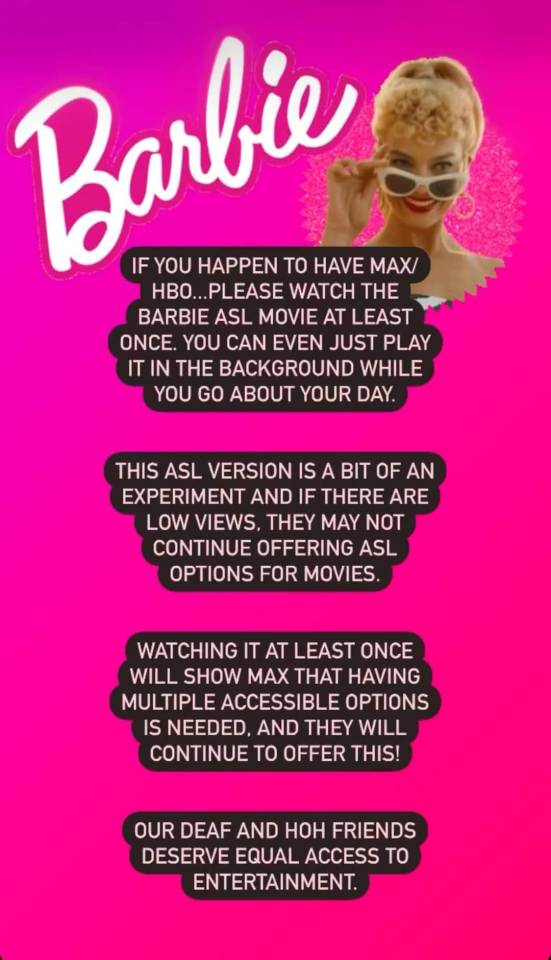
482 notes
·
View notes
Text
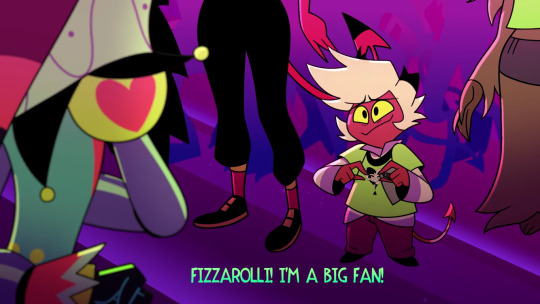



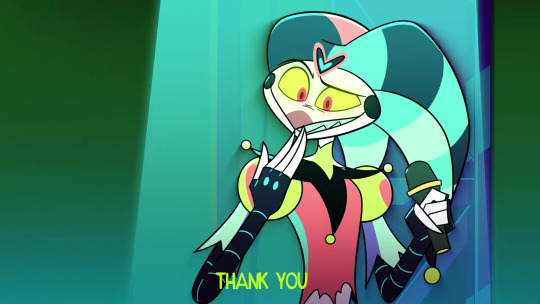

starts crying
#helluva boss#helluva boss fizzarolli#american sign language#i almost screamed when i saw this#the representation is so real 🗣🔥🔥
565 notes
·
View notes
Text
So the members of the discord at @bfpnola were explaining to me why BASL (Black American Sign Language) is a separate language than ASL (American Sign Language) because I was wondering if it was for a similar reason as AAVE (African American Vernacular English).
Fun fact. It's because of segregation. So when Sign Language in America was being taught. The schools were segregated, so they each dealt with deaf accommodations in their own way. White schools were taking a more integration approach so they highly frowned on the use of Sign and they were trying to get deaf kids to practice speaking.
However, Black schools were more opening to the use of Sign, so they had a lot longer to develop their Sign Language than White schools, as they were encouraging Sign at a time when white schools weren't.
Follow and support @bfpnola because they teach me so many things and it is so cool. 😁
-fae
3K notes
·
View notes
Text
Writing ASL: Techniques to Write Signed Dialogue
Hey, guys! I've been reading a lot of DC Batfamily fanfiction lately, and in doing so I realized how little I see of ASL being represented in written text (love you, Cass!). I wanted to briefly talk about tactics to writing American Sign Language (ASL), and ways that these techniques can help improve your writing in more general contexts!
SOME THINGS BEFORE WE GET STARTED
I will be discussing everything in terms of ASL! If you have a character who uses Chinese Sign Language or even British Sign Language, the same rules will not necessarily apply! Don't be afraid to do some extra research on them.
Do not let this dissuade you from writing a character who signs ASL! This is by no means the end-all be-all to writing ASL dialogue, and I do not intend this post to insinuate that by writing ASL the same way you write English you are deeply offending the Deaf community. If this is something you're interested in though, I highly recommend experimenting with the way you write it! Above all, have fun with your writing.
Related to 2nd rule, but still very important: not everyone will agree that sign language should be treated/written any differently than English. This is a totally valid and understandable stance to take! I do not hope to invalidate this stance by making this post, but rather to introduce an interested audience to how ASL operates in the modern world, and how that can be translated into text.
ADDRESSING SOME MISCONCEPTIONS
ASL is the same as English, just with gestures instead of words.
Actually, no! There is a language that exists that is like that: it's called Signing Exact English, and it's an artificial language; i.e., it did not come about naturally. All languages came from a need to communicate with others, and ASL is no different! It is a language all on it's own, and there is no perfect 1:1 way to translate it to English, just as any spoken language.
2. But everyone who signs ASL knows how to read English, don't they?
No, actually! Because it's a completely different language, people who sign ASL and read English can be considered bilingual: they now know two languages. In fact, fingerspelling a word to a Deaf person in search for the correct sign does not usually work, and is far from the preferred method of conversing with Deaf people.
3. Because ASL does not use as many signs as we do words to articulate a point, it must be an inferior language.
Nope! ASL utilizes 5 complex parameters in order to conversate with others: hand shape, palm orientation, movement, location, and expression. English relies on words to get these points across: while we may say "He's very cute," ASL will sign, "He cute!" with repeated hand movement and an exaggerated facial expression to do what the "very" accomplishes in the English version: add emphasis. Using only ASL gloss can seem infantilizing because words are unable to portray what the other four parameters are doing in a signed sentence.
4. Being deaf is just a medical disability. There's nothing more to it.
Fun fact: there is a difference between being deaf and being Deaf. You just said the same thing twice? But I didn't! To be deaf with a lowercase 'd' is to be unable to hear, while being Deaf with an uppercase is to be heavily involved in the Deaf community and culture. Deaf people are often born deaf, or they become deaf at a young age. Because of this, they attend schools for the Deaf, where they are immersed in an entirely different culture from our own. While your family may mourn the loss of your grandfather's hearing, Deaf parents often celebrate discovering that their newborn is also deaf; they get to share and enjoy their unique culture with their loved one, which is a wonderful thing!
YOU MENTIONED ASL GLOSS. WHAT IS THAT?
ASL gloss is the written approximation of ASL, using English words as "labels" for each sign. ASL IS NOT A WRITTEN LANGUAGE, so this is not the correct way to write it (there is no correct way!): rather, it is a tool used most commonly in classrooms to help students remember signs, and to help with sentence structure.
IF THERE'S NO CORRECT WAY TO WRITE IN ASL, THEN HOW DO I DO IT?
A most astute observation! The short answer: it's up to you. There is no right or wrong way to do it. The longer answer? Researching the culture and history, understanding sign structure, and experimenting with description of the 5 parameters are all fun ways you can take your ASL dialogue to the next level. Here are 3 easy ways you can utilize immediately to make dialogue more similar to the way your character is signing:
Sign languages are never as wordy as spoken ones. Here's an example: "Sign languages are never wordy. Spoken? Wordy." Experiment with how much you can get rid of without the meaning of the sentence being lost (and without making ASL sound goo-goo-ga-ga-y; that is to say, infantilizing).
Emotion is your friend. ASL is a very emotive language! If we were to take that sentence and get rid of the unnecessary, we could get something like "ASL emotive!" The way we add emphasis is by increasing the hand motion, opening the mouth, and maybe even moving the eyebrows. It can be rather intuitive: if you mean to say very easy, you would sign EASY in a flippant manner; if you mean to say so handsome, you would sign handsome and open your mouth or fan your face as if you were hot. Think about a game of Charades: how do you move your mouth and eyebrows to "act out" the word? How are you moving your body as your teammates get closer? There are grammar rules you can certainly look up if you would like to be more technical, too, but this is a good place to start!
Practice describing gestures and action. ASL utilizes three dimensional space in a lot of fun and interesting ways. Even without knowing what a specific sign is, describing body language can be a big help in deciphering the "mood" of a sentence. Are they signing fluidly (calm) or sharply (angry)? Are their signs big (excited) or small (timid)? Are they signing rushedly (impatient) or slowly? Messily (sad) or pointedly (annoyed)? Consider what you can make come across without directly addressing it in dialogue! Something ese about ASL is that English speakers who are learning it tend to think the speakers a little nosy: they are more than able to pick up on the unsaid, and they aren't afraid to ask about it.
Above all, don't be afraid to ask questions, do research or accept advice! New languages can be big and scary things, but don't let that make you shy away. Again, there is nothing wrong with deciding to write ASL the same as you write your English. I've personally found that experimenting with ASL dialogue in stories has aided me in becoming more aware of how to describe everything, from sappy emotional moments to action-packed fighting scenes. Writing ASL has helped me think about new ways to improve my description in more everyday contexts, and I hope it can be a big help to you as well, both in learning about Deaf culture and in pursuing your future writing endeavors. :)
P.S: I am quite literally only dipping my toes into the language and culture. I cannot emphasize how important it is to do your own research if it's someting you're interested in!
P.P.S: I want to apologize for my earlier P.S! What I meant by “I am … dipping my toes into the language and culture” was in direct regards to the post; what I should have said is “this post is only dipping its toes into the language and culture.” While I am not Deaf myself, I am a sophomore in college minoring in ASL and Deaf Culture, and I am steadily losing my hearing. Of course, that does not make me an authority figure on the topic, which is why I strongly encourage you to do your own research, ask your own questions, and consult any Deaf friends, family, or online peers you may have.
#dc batman#batfamily#cassandra cain#ASL#american sign language#deaf#deaf culture#tayscreams#writing advice#writing
2K notes
·
View notes
Text
Are there accents in sign language? Like, within ASL or BSL, can you spot which deaf community an individual is from based on how far they tilt their hands in a movement, or some other seemingly subtle (or maybe big?) differences? Do families sign exactly the same way, in the same way hearing families often have extremely similar voices?
I imagine there's lots of ways to convey certain tones? I'm picturing maybe positioning your hands a certain way to convey that something you're signing is sarcastic, the same way hearing people change tone.
Do different generations have different slang? Like, do millennials and gen z have totally different ways of saying the same thing? Do deaf millennials have some equivalent of "doggo" which deaf gen z's roll their eyes at?
Do people create new signs all the time the same way slang in the hearing world is constantly evolving?
I'm really sorry if these questions are ignorant as hell.
I'm so intrigued and excited to learn more about a world I know very little about. I feel like there will be so many layers and intricacies I'm totally unaware of.
Please forgive any ignorance I'm showing 🌻
249 notes
·
View notes